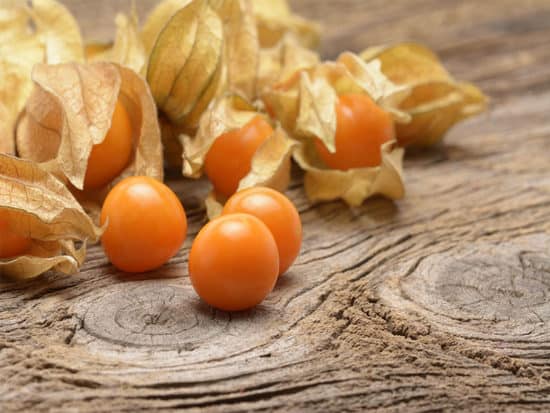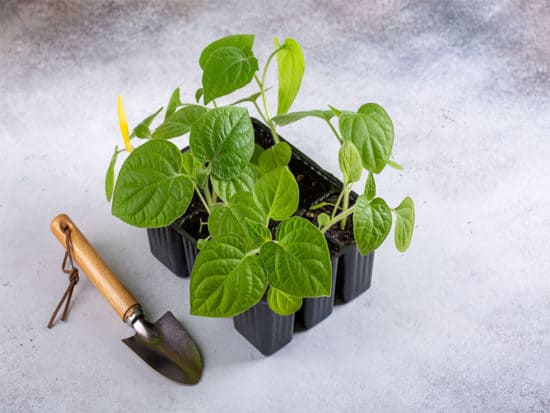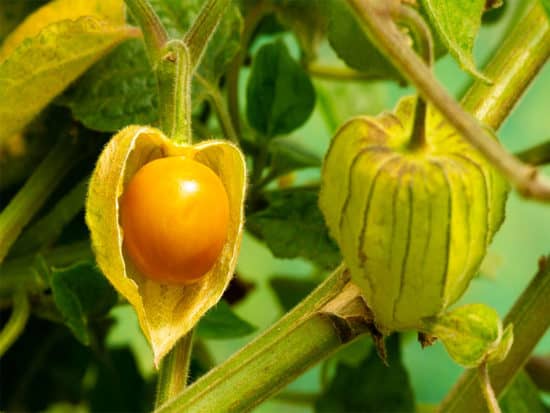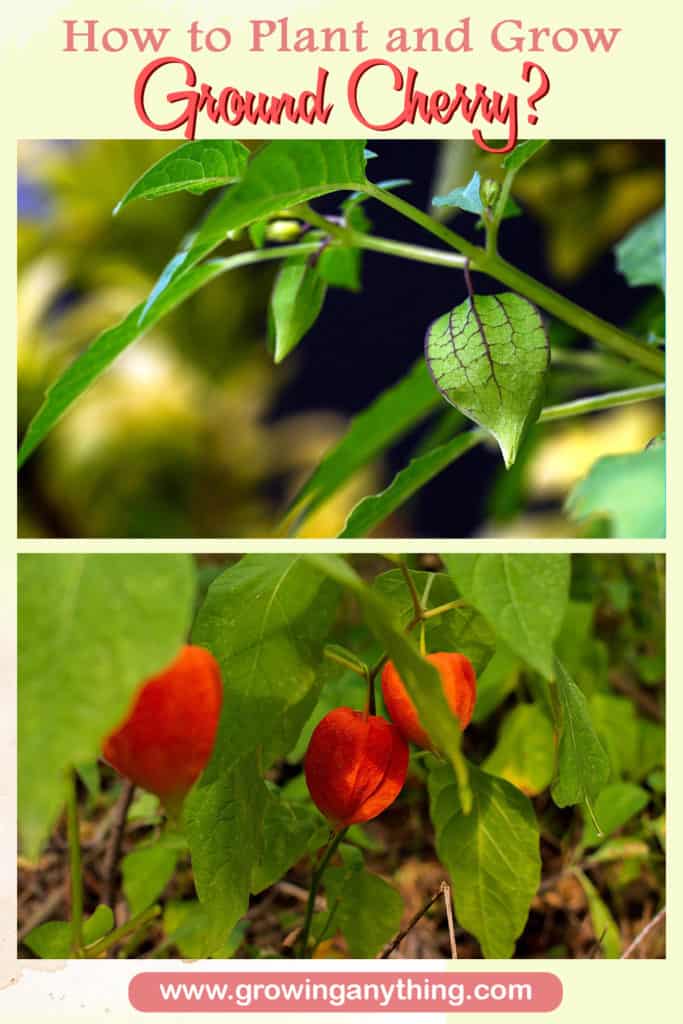How to Plant and Grow Ground Cherry?
Ground cherries are as delicious as they are nutritious. They are tomato relatives and ideal plants for your garden. I am here to help learn how to plant and grow ground cherry and get satisfying results!
Because ground cherries are summer annuals, they can award you with fresh, tropical-taste fruits after only one season.
Before I move on to the practical advice about growing ground cherries, let’s see more about these plants.
Ground Cherries – Origin and Look
Ground cherries are known for their numerous names. Herbologists believe they originally came from Brazil and spread throughout the world, first in South Africa, Australia, Hawai, and further in the U.S.
Some of the names for ground cherries are Cape Gooseberry, Husk Cherry, Husk Tomato, Goldenberry, Poha, and Poha Berry. Husk tomato is a widely spread name because ground cherries are close relatives to tomatoes. However, Physalis peruviana is the recognized scientific name.
Look
In many parts of the U.S., you can see ground cherries alongside the road or in large fields. They have large, bell-shaped flowers with a purple center. The flowers are sometimes white to yellow.
The green lantern-shaped husk holds the fruit inside it. When the color transformation from green to tan is complete, the berry is ripe.
The last stage is when the husk breaks down and shows the berry alongside delicate encasement around the fruit.
Ground berries are sometimes grown close to the ground, but they can also grow upright. It depends on growing conditions and variety.
Generally, ground cherries are fun and easy to grow. They have a low and bushy look, but they deliver numerous marble-sized fruits. You can expect fruits from midsummer to hard autumn frost.
The ground cherries are firm with tiny seeds; so many people think these are seedless.
IMAGE: Ground cherries are easy to clean from their husks!

Taste and Varieties
Ground cherries make a delicious snack. They have a sweet, creamy taste with just a hint of tomato flavor. The taste reminds me of pineapple taste, but it has a bit more acidic taste to it.
It makes a convenient snack and a healthy alternative to sweet pies.
Let’s have a closer look at the most common varieties of ground cherries.
Aunt Molly’s
Aunt Molly’s is a Polish heirloom with a delightful citrus-like flavor with a hint of tropical kick. It needs around 70 days to fruit.
If you are more for a sweet taste, a Pineapple ground cherry is for you. It needs around 75 days to fruit.
Goldie requires 75 days to fruit. It is different from other varieties due to the larger golden fruit.
Mary’s Niagara
Mary’s Niagara grows low and has a wide bush, from three to four feet wide. If you grow Mary’s Niagara, you can expect the fruits to ripen sooner.
If you live in a climate with a short growing season, Mary’s Niagara can be the best cultivar for your conditions.
Besides, the fruits have a subtle and not too sweet flavor.
New Hanover
Many people prefer New Hanover to widely spread Aunt Molly’s cultivar. It has a sweet and fruity flavor, but it can require more controlled growing conditions.
Pineapple
The pineapple cultivar is sometimes called Cossack Pineapple. It got its name by its pineapple-like taste. It is also easy to grow and can be grown in all US regions.
Planting Ground Cherries from the Scratch
You can find growing cherries in plant nurseries, and it is the easier way to grow your ground cherries. However, it is better to plant ground cherries from seed, especially in the first year.
You will have to start planting indoors six or eight weeks before transplanting them outside in the soil or container.
You need to prepare a soil mix in a moderately deep pot. Plant the seed in 1/4” and mix it with a little compost to boost the mix. Optimally, you can sow two seeds per pot.
Don’t rush your ground cherries. Seeds grow better in warm soil, so choose the pot location wisely. Also, keep the pot in a place where it will have a lot of light, at least six hours per day. The top of the clothes dryer is an ideal spot, but only the spot gets enough light.
You can put a plastic wrap on the top of the pot with seeds. That way, the plastic wrap will hold moisture and heat better. The ideal temperature for seeds to germinate is around 70 to 75 degrees Fahrenheit.
You can remove the plastic wrap when you notice emerging seedlings. In most cases, it happens between seven and 14 days after planting. Water the seeds once you notice that the soil is dry.
Ground cherries are sensitive to frost. Therefore, wait until the cold days are over and until the ground is warm. If you want to prepare the soil sooner, tile the dirt up and place the black landscape cloth to warm it up.
Make sure that the starts are hard before you transplant them outdoors in the garden or the container. The best way is to start slowly and let include the adjustment period. Let the seed be half an hour outside and gradually increase the outdoor time.
Growing Ground Cherries in Containers
IMAGE: You can grow ground cherries in pots and containers on the balcony!

Outdoor containers are great for growing ground cherries. It is especially convenient for people who have limited space and want something different than standard tomatoes.
The container needs to be large enough to hold the ground cherries’ roots. A minimum depth required for growing ground cherries in containers is 8 inches.
Many people prefer to grow them in containers because ground cherries can creep in the garden.
If you decide to use containers, remember to water your ground cherries more frequently.
Ideal Growing Conditions
Husk tomatoes love the sun. Therefore, place the container or plant your ground cherries in the soil where it will receive a lot of sunlight, approximately eight hours per day. Also, these plants grow better in well-drained soil.
Husk tomatoes will reward you with lots of fruits if you ensure ideal growing conditions from the start.
Remember, ground cherries need more nutrients at the beginning to grow better. Compost can be an excellent solution. For example, when you plant the seeds in the ground, leave the three layers of leaves above it.
Conveniently, once the initial compost is placed, your ground tomatoes won’t require a lot of fertilizer. Moreover, if you boost them with nitrogen, they can develop bush, but not fruits.
Therefore, ideally ensure a good, nutritive start for your ground cherries. Let them be for the rest of the growing season.
Growing Ground Cherries in the Garden
These plants might take a lot of space if you don’t use cages or stakes. At transplanting time, prepare a small tomato cage or three wooden stakes, approximately 4-foot long. Unsupported ground cherry seeds need three feet distance between them. But, you can place supported seeds on a 2-feet distance.
The husk tomatoes won’t grow tall. The average height is around 1½ and 3 feet.
Because husk tomatoes pollinate themself, they are suitable for limited space.
Harvesting
You can expect the fruits on your cherry ground plant somewhere between 65 and 75 days from transplanting the seed in the container or the ground. Mostly, it depends on the species you have planted and growing conditions.
Your plant will make new fruit continuously until the frost kills the fruits. If you want to extend the fruit period, you can cover your plant to save it from the frost.
Generally, each plant will produce hundreds of fruits. Therefore, for residential use, one or two plants will keep you supplied for the entire season.
Often, the fruits fall from the plant before they turn ripe. You can harvest those fruits that have fallen. Give them a few days to ripe in their husk.
When the husk gets a papery look, the fruit will turn yellow, and it is ready for eating.
IMAGE: When the husk turns yellow, the fruit is ready for harvesting!

If you don’t plan to eat the fruit immediately, leave the husk on. That way, it will preserve freshness and be tastier for longer.
Still, if you keep them with their husk in a ventilated basket in a cool place, you can keep them for three months.
If you remove the husk and wash them, you can prolong their freshness for seven days only.
Additionally, you can dry or freeze the ground cherries, as you would freeze any other fruit.
Saving Seeds
You can decide to save the seeds, but if you decide to plant the seeds in the garden, you might don’t need to. Even if you don’t save the seeds, you can expect the ground cherries to pop up in your garden sometime next year.
However, to have better control over the growing process, I recommend saving a couple of seeds. That way, you can transplant them to the location where they grow better.
Saving the growing cherry seeds is simple. First of all, you need to mash several fruits in a larger bowl with water. Next, swirl and mash the fruit flesh gently until you can separate the seed from the fruit pulp.
I advise you to let the mixture sit a while. The seeds are ready for extraction when they fall down the bottom.
Rinse the seeds and spread them on a dry cloth or a coffee filter. When the seeds are dry keep them in a clean box and plant them when they are ready for planting.
Tips for Growing Ground Cherries
Growing ground cherries is relatively simple, but with a few tricks, you get even better results.
For example, mulching beneath the plant will help conserve the water. Also, it will simplify the harvesting process. You can use a straw to mulch.
Next, the ground cherry plant loves the sun, but you can place it in the light shade as well. It won’t affect the fruit making process.
If you are worried about the frost, you can save your plant by covering it with a row cover. Covering the plant with row cover will extend the growing season, and you can harvest the fruits for longer.
Lastly, if you plan to grow your ground cherries next year, too, you should rotate the nightshades.
It can prevent nutrient depletion and keep the plants healthy and disease-free.
Pests and Diseases
Luckily, husk tomatoes aren’t prone to bacterial, fungal, and viral issues.
But, if you grow your ground cherries, you need to keep an eye on them for flea beetles, whiteflies, leaf beetles, and mites.
To prevent the damage, water the plants frequently and include the floating row cover over your plants.
Because of their health and simple maintenance, ground cherries are ideal for beginners.
However, let’s see how you can fight the most common garden critters.
- Herbivores
Every garden is attractive to some animals such as squirrels, rabbits, possums, raccoons.
Because ripe ground cherries are hidden in the husk and the bush, these animals cannot find them often.
However, you can prevent damage from these animals by installing floating row covers. The covers will offer sufficient protection.
- Insects
Most insects don’t like the ground cherry fruits, but you can expect a few bugs to find your fruits.
Cutworms are the most common problem that can damage seedlings. To prevent the damage caused by cutworms, you can sprinkle crushed eggshells or coffee grounds around your plants. It will keep the cutworms away from your ground cherries.
However, cutworms often look similar to good butterflies, so make sure to find images online to identify them correctly.
- Tomato Hornworm
Tomato hornworms attach nightshade plants, so you need to protect your ground cherries and all other nightshades.
You can easily crush them with your feet or let your chickens feast on them.
- Other insects
Colorado potato beetles and leaf beetles are easily recognizable by their specific look.
These insects look like tiny clowns and have black and yellow stripes.
There isn’t a better way to deal with them than picking them off the plant and destroying them. Make sure to occasionally inspect your plants to see if the insects attacked your plants.
- Flea beetles
Flea beetles are tiny bugs that make holes in the leaves.
There is a trick that can help you to keep your plants free of flea beetles. Basil is quite efficient against flea beetles, so you plant it nearby.
However, the most efficient strategy against insects is inspecting your plants from insects and implementing the appropriate strategy against the insects.
What can you do with Ground Cherries?
Ground cherries are delicious, and you can eat them fresh or from the fridge, for a snack or a full meal, if you are on a calorie-controlled diet. One serving of 3.5 oz of ground cherries has only 53 calories. It has 1 g of fat and includes beta carotene, phosphorus, calcium, bioflavonoids, proteins, and fibers. Therefore, you should include them in your meals! Let’s see how!
For example, you can dip the fruits in chocolate, and have a tasty dessert.
Next time you are making salsa add the ground cherries, and enjoy a tropical taste! Or, you can toss several fruits in your salad and boost the minerals intake as well as the taste.
Additionally, you can use the ground cherries on top of your pizza or cook them in pies and muffins.
Lastly, when cooked in a batch for chutney, ground cherries taste delicious!
How many Fruits can you Expect From One Plant?
If you ensure good growing conditions, a light spot, and enough water and fertilizer from the start, one plant can produce up to 300 fruits. However, the average plants make slightly fewer fruits, but you can always plant two or more plants per season.
Still, remember to set the plants in rows and ensure each plant is 3 to 4 feet from the other.
What About Watering?
Finding the right balance in watering can be challenging for many plants. Luckily, it isn’t the case with ground cherries.
Ground cherries need at least 1 inch of water weekly. If you live in a dry climate, you can water them more frequently but sparsely. That way, you will prevent root decay.
However, regular watering is important, because not enough water causes the plant to drop the blossoms without fruits.
Final Thoughts
Ground cherries or Husk tomatoes are tasty and healthy food. Conveniently, ground cherries are ridiculously easy to plant and care for, but they ensure an abundance of sweet and tropical flavors. They are suitable for growing in the garden soil or containers.
I also like how little damage you can expect from pests and diseases because it is one of the most resilient plants.
When growing ground cherries, the most important is to start on the right tracks and ensure warm conditions in the pot before the seedlings are ready for outdoor transplantation. All you next have to do is pick the proper spot with a lot of light and water the soil regularly and optimally. Protect the plant from frost and enjoy the fruits longer!
It is all it takes to have a few hundred fruits on every plant!

